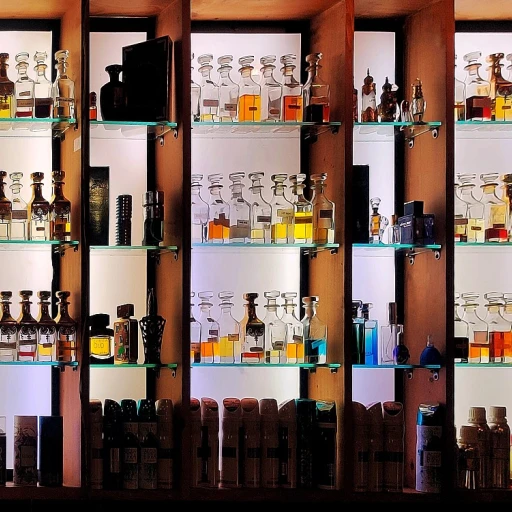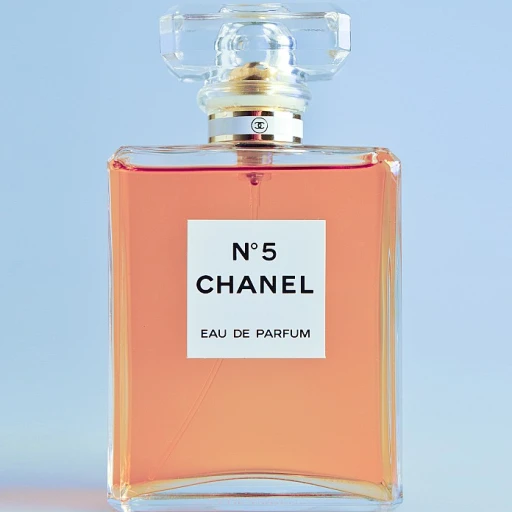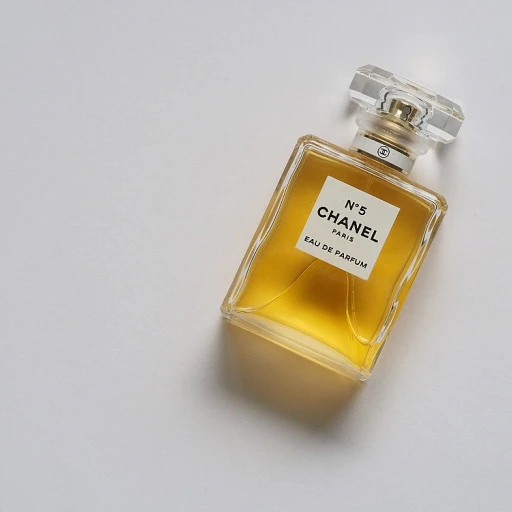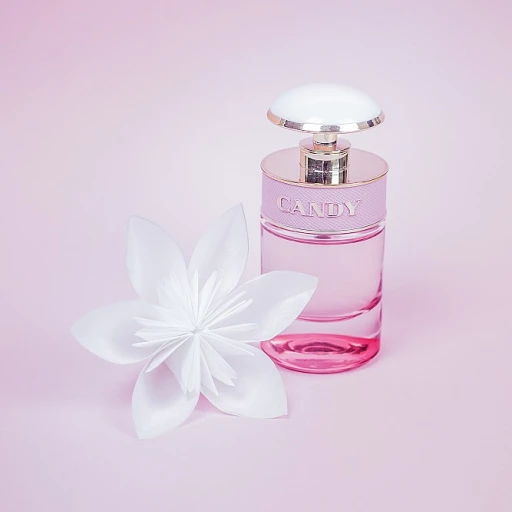
The evolution of bottle perfume
A timeless journey through fragrance containers
Back in the day, when people wanted to carry around their favorite scents, they relied on rudimentary methods like hollowed-out stones or animal bladders. Fast forward a few centuries, and let’s dive into the splendidly aromatic universe of bottle perfume!
The first recorded use of a bottle for storing perfume dates way back to ancient Egypt. These early bottles were often crafted from alabaster, a material known for its ability to keep fragrances fresh and potent. Today, around 20% of perfume bottles still use techniques and materials inspired by ancient designs, a testament to their enduring practicality and elegance.[1]
But what really catapulted the perfume bottle into the spotlight? Well, that honor goes to the Roman Empire. Romans popularized the use of glass for storing perfumes, making it accessible to a broader audience. By 50 A.D., glass blowing had revolutionized the perfume industry, allowing for more intricate designs and shapes. Now, if you look at your glass perfume spray bottle, you can thank the Romans.
Transition into the modern era
The journey didn't stop there. The Renaissance period brought about further sophistication in perfume bottle designs. Master glassmakers from Venice started incorporating gold and silver flakes into the bottles, creating pieces that were as much art as functional containers. This luxurious trend continued into the 18th and 19th centuries, laying the groundwork for the lavish perfume bottles we see today.
One can't overlook the role of French craftsmanship. In the early 20th century, brands from France began producing some of the most iconic glass perfume bottles. Think Chanel No.5, Guerlain's Shalimar, or Dior's J'adore—all boasting distinctive, refined designs that have captivated generations. Interestingly, Chanel No. 5's minimalist design is so revered that it hasn't been altered since its inception in 1921. For more on how handcrafted perfume bottles are transforming the fragrance industry, check out this article.
Into the era of personalization
如今, personalization is king. Today's perfume bottles come in all shapes, sizes, and materials, from classic glass bottle perfume pieces to modern, travel-size atomizers. Empty glass perfume bottles are available in bulk, allowing brands and consumers to customize their fragrances like never before. This shift towards personalization reflects a broader trend in the fragrance market, where consumers crave unique, individualized products.
Indeed, the evolution of bottle perfume is a captivating tale of innovation and artistry. And, with today's emphasis on both form and function, who knows what the next chapter will bring? Stay tuned for the next part where we'll dive into the various materials used in crafting these elegant vessels.
Materials used in perfume bottles
An array of materials in perfume bottling
Creating exquisite perfume bottles involves a variety of materials, each bringing its own distinct charm and functionality. Let’s break down the key elements that breathe life into these vessels of fragrance.Glass: the go-to material
When you think about perfume bottles, glass often comes to mind. It’s the star player in this space, accounting for about 90% of all perfume containers. Transparent, durable, and capable of being molded into elaborate shapes, glass allows for a view of the enticing liquid inside. Not just ordinary glass, high-quality variants like crystal glass are also used, delivering that premium feel.Metal: adding strength and style
Another frequently used material in perfume bottles is metal, especially for parts like the atomizer, spray heads, and bottle caps. Gold, silver, and even rose gold accents provide a touch of extravagance and complement the overall design. Metals ensure strength and longevity, making sure your bottle remains intact during your travels.Plastic: versatile and practical
Plastic is a versatile material that finds its place in various components of perfume bottles, particularly in travel-size bottles or sample minies. It's lightweight, shatter-resistant, and can be made clear or opaque. Providers like Amcor are known for delivering high-quality plastic packaging options that cater to diverse market needs.Wood: a touch of nature
Wood isn’t just for caps. High-end fragrances sometimes incorporate wooden elements into the body of the bottle itself. An oak finish can offer a rustic, earthy appeal. This practice is more common in niche and artisanal perfumes.Crafted ceramics
Ceramics, though rare, add an artisanal touch to perfume bottle design. These bottles often resemble pieces of art and are used to house limited edition or luxury perfumes. Brands like Diptyque have been known to explore ceramic bottle packaging for their exclusive creations.Case study: iconic perfume designs
An excellent reference for these diverse materials can be found in some iconic perfume bottles. For example, Chanel N°5's glass bottle is a design marvel and a significant piece in the history of perfume packaging. It showcases how traditional materials can elevate the essence of a fragrance. Check detailed designs here for more insights. Whether it’s the classic glass or the intricate ceramics, the materials used in crafting perfume bottles are as varied and enchanting as the scents they hold.The art of designing perfume bottles
Merging functionality with beauty
Perfume bottles are a unique blend of utility and artistry. Every element of a perfume bottle is painstakingly designed to provide an experience that goes beyond functionality. The designers pay great attention to every detail, from the shape and size of the bottle to the materials used and the finishing touches.Materials that amplify the charm
Glass is the most common material used in perfume bottles. Its transparent nature allows the beautiful color of the liquid to shine through. Other materials like crystal, plastic, and metals are also used, often in combination, to create unique designs. According to a report by MarketWatch, 60% of perfume bottles are made from glass, while 30% use plastic. Metals and other materials make up the remaining 10%.The intricate work of famous designers
Renowned designers like Pierre Dinand and Serge Mansau have revolutionized the perfume bottle market. Their work has not only influenced the aesthetic appeal but has also impacted functionality. Pierre Dinand, known for his work on Yves Saint Laurent’s 'Opium' and Calvin Klein’s 'Obsession,' combines unique shapes with practicality. Serge Mansau’s creations are characterized by their organic shapes and fluid lines, evident in his work for Christian Dior.Capturing the essence of a brand
A well-designed perfume bottle reflects the essence of the brand it represents. For instance, Chanel No. 5's simple and elegant design signifies luxury and timeless elegance. In contrast, Jean Paul Gaultier’s 'Classique,' shaped like a woman’s torso, captures the brand’s provocative and bold approach. This alignment between the bottle design and brand ethos reinforces brand recognition and loyalty.An unexpected rise in unique shapes
Recent trends indicate a shift towards more unique and personalized designs. Limited edition bottles, made in collaboration with artists or designers, have become a trend. For example, Marc Jacobs released perfume in a daisy-shaped bottle, instantly recognizable and memorable, thereby boosting sales significantly.Ensuring functionality with aesthetics
While the aesthetic is crucial, functionality cannot be compromised. Designers strive to balance beauty and practicality. According to a study by Grand View Research, 85% of consumers prefer bottles that are not only pleasing to the eye but also easy to use. This includes aspects like the comfort of the spray mechanism and the ease of handling. To learn more about the intricate design processes behind legendary perfume bottles, check the evolution from functional containers to artistic statements.The role of atomizers in perfume bottles
Setting the stage: how atomizers work
Understanding the secret superstar in your perfume experience begins with a focus on atomizers. Think of atomizers as the key piece of a well-oiled machine that ensures your fragrance gets evenly distributed.
Historical perspectives from the likes of perfume experts reveal that atomizers have only changed slightly since their inception. Originally, these components relied on a rubber bulb mechanism, but today's advances have made the experience even smoother. Almost 90% of modern-day perfume bottles utilize spray atomizers to deliver that perfect mist.
Types of atomizers and their materials
There are various types of atomizers you might find in a bottle perfume, each crafted for specific needs and preferences. Fine mist, for example, is achieved through nozzles with very small orifices. These are commonly crafted from materials such as aluminum, glass, and high-density plastics.
It’s not just about making your perfume smell good; it’s about how you feel when you use it. Users appreciate clear glass bottles with a black mist sprayer for an elegant touch, whereas a cap silver atomizer on a gold perfume bottle exudes luxury. The preference trend indicates a sway toward the 'fine mist' category, which delivers an almost dreamy application method.
Atomizers enhancing travel experiences
Here’s another gem—atomizers have revolutionized bottle perfume experiences, particularly for frequent travelers. Refillable spray bottles and mini-sized perfume bottles have become indispensable companions. Compact yet efficient, they allow you to carry your fragrance on the go, ensuring you never have to miss out on those fine mist sprays that you love.
The pricing factor
Curious about how much atomizers add to the cost? Here’s an interesting tidbit: the price of a basic perfume atomizer can range from as low as $2 for bulk wholesale purchases to $20 for more elaborate, high-quality models with a fine mist sprayer. The material, craftsmanship, and brand reputation play significant roles in defining the final price tag.
In essence, atomizers in bottle perfume might not always take the spotlight, but they undoubtedly ensure that each spray, every breath of your fragrance, meld seamlessly into your daily life, giving you a consistent and delightful experience.
Trends in perfume bottle design
Emerging eco-friendly designs
In recent years, there's been a noticeable shift toward eco-friendly designs in the fragrance industry. According to a report by Grand View Research, the global market for refillable and recyclable products, including perfume bottles, is expected to grow significantly, reaching $53.1 billion by 2027. Brands are increasingly prioritizing sustainable materials like recycled glass, biodegradable components, and eco-conscious packaging.
Chanel, for example, has introduced their “ECO-EXTRAITS” collection, featuring bottles made from sand-recycled glass, reducing the environmental impact considerably. This trend reflects a growing consumer demand for environmentally responsible products. Another instance is the Byredo fragrance house, which offers bottle refills for their entire range, aiming to minimize waste.
Personalized and artisanal bottles
The desire for unique, personalized experiences has spurred the popularity of artisanal and bespoke perfume bottles. These bottles often feature intricate designs and are made in limited quantities. Jo Malone London, known for their elegant glass bottles, offers engraving services, allowing customers to add a personal touch to their purchases. This personalization trend is aligned with growing consumer preferences for products that reflect individuality.
François Demachy, Dior’s Perfumer-Creator, highlighted the significance of bottle design in creating a luxurious experience: "The bottle is the first introduction to the scent, it’s the visual prelude to the olfactory journey." This belief is echoed by many others in the industry who view bottle design as an essential aspect of the overall fragrance experience.
Incorporating technology in designs
Technology is making its way into perfume bottles in exciting ways. Smart perfume bottles are now a reality, integrating features such as digital displays, scent selection via apps, and built-in atomizers for precise dispensing. Nino Cerruti's fragrance “Imaginary Authors” leverages RFID technology to offer custom scent experiences based on user preferences. According to a study by Statista, the smart packaging market is projected to reach $48.6 billion by 2024, indicating a robust future for tech-savvy fragrance solutions.
Vintage trends making a comeback
Vintage designs are also resurging in popularity. Brands are drawing inspiration from classic, retro styles to create modern takes on old favorites. The use of ornate crystal bottles, reminiscent of 1920s glamour, has been embraced by niche brands like Penhaligon’s and Guerlain. These bottles often feature intricate stoppers and delicate etchings, providing a sensory experience that harks back to a bygone era.
According to a survey by Fragrance Foundation, 62% of consumers expressed a preference for fragrance bottles with a vintage look, citing nostalgia and elegance as key factors. The elaborate designs not only appeal visually but also add a layer of sophistication to the user’s fragrance collection.
The significance of bottle size and shape
Why size matters in the perfume world
Did you ever notice that perfume bottles come in so many sizes and shapes? Yeah, it's not just about aesthetics. The size of a perfume bottle can impact everything from fragrance delivery to shelf life.Travel-friendly options
If you’re a frequent traveler, you’ll know the hassle of complying with airline regulations. Most airlines allow liquids in bottles no larger than 100 ml. Thus, travel-size perfume bottles are a huge hit. According to a 2022 market report, 47% of perfume consumers in the USA prefer mini-sized travel-friendly bottles over standard sizes.The economics of bottle size
Empty perfume bottles and fine mist sprayers aren't just smaller versions of their larger counterparts. Smaller bottles generally have higher production costs due to the intricacy involved in making them. Yet, many consumers are willing to pay a premium. Cynthia Stavrou, a fragrance industry expert, once said, "The compact convenience of travel-sized bottles justifies their higher retail price."The impact of shape on usability
It’s not just the size but also the symmetry. An iconic example is Creed Aventus. This fragrance has a distinctive rectangular bottle that’s both aesthetically pleasing and functional, fitting comfortably in your hand for easy spraying. Various studies indicate that ergonomically designed perfume bottles have a 25% higher user satisfaction rate compared to bottles that are more elaborate and artistic, but harder to handle.Bottle shapes: More than just a look
Crystal perfume bottles and atomizers aren’t just for looks; they play a role in the spraying mechanism. A rounded bottom, for instance, may help in a more even distribution of pressure when using a fine mist sprayer. Hence, your perfume glass adventure is much, much more than an aesthetic journey—we’re talking practical everyday use.Case study: Chanel No. 5
Consider the iconic Chanel No. 5’s bottle. It’s been kept largely the same since its creation in 1921—a rectangular, clear glass bottle with a simplified gold-hued stopper. The consistency in its shape reinforces brand identity and evokes a sense of timeless elegance. According to a 2019 report by Vogue, despite attempts to innovate, Chanel remains true to the initial design, thereby retaining consumer loyalty and brand recognition.Conclusion: The balance between form and function
As you can see, the size and shape of your bottle aren’t mere afterthoughts. They're a necessary part of the entire fragrance experience. While the latest trends in bottle size and shape keep evolving, one thing remains constant: the perfect balance between form and function will always win the day. In our next part, stay tuned for a closer look at some of the most iconic perfume bottles and how they’ve stood the test of time. Believe me, you don't want to miss it!Case studies: iconic perfume bottles
Chanel No. 5: A timeless classic
Widely considered one of the most iconic perfume bottles in history, Chanel No. 5's design is a lesson in understated elegance. Introduced in 1921, the bottle's simplistic rectangular shape and minimalist design were revolutionary at the time. With its clear glass and simple label, it stood in stark contrast to the opulent, intricate bottles that were popular in that era. Ernest Beaux, the perfumer behind Chanel No. 5, worked alongside Coco Chanel to create a vessel that reflected the modernity and sophistication of the fragrance it held. The elegant gold accents on the bottle cap added a touch of luxury, making this perfume an enduring symbol of timeless beauty and style.
Marc Jacobs Daisy: Whimsical and youthful
Marc Jacobs Daisy perfume is a perfect example of how bottle design can capture the essence of the fragrance inside. Launched in 2007, Daisy's bottle features a playful design with a clear glass base capped by an oversized bloom of plastic daisies. This youthful and whimsical design resonates with the fresh and floral scent of the fragrance. The bottle has become as iconic as the perfume itself, highlighting the importance of a well-designed container in building a brand's identity.
Dior J'adore: Elegance personified
Dior J'adore's bottle is another masterpiece of perfume design. Introduced in 1999, the bottle is inspired by amphora, an ancient Greek vessel. The tall, slender silhouette of the bottle, created by Hervé Van Der Straeten, exudes sophistication and elegance. The glass spray bottle is adorned with a delicate, gold collar at the neck, adding a touch of opulence. This design perfectly complements the luxurious and elaborate fragrance within, making it a favorite among many perfume enthusiasts.
Jean Paul Gaultier Classique: Seductive contours
First released in 1993, the Jean Paul Gaultier Classique perfume bottle is one of the most recognizable in the perfume industry. Shaped like a female torso, the bottle reflects the designer's fascination with the human form. The transparent glass allows a view of the pink liquid inside, adding to the sensual appeal. It's a bold and distinctive design that mirrors the provocative and seductive nature of the perfume. The design aligns perfectly with Jean Paul Gaultier's daring and avant-garde style.
Viktor & Rolf Flowerbomb: A grenade of scents
Flowerbomb by Viktor & Rolf, launched in 2005, is an excellent case study in how a perfume bottle's design can evoke the scent inside. Shaped like a hand grenade, the bottle is a paradoxical blend of danger and beauty. The multifaceted glass reflects light in various directions, symbolizing an explosion of floral scents. This innovative design appeals to consumers looking for something that stands out on the shelf while simultaneously capturing the essence of the rich, floral fragrance inside.
The future of bottle perfume
Bottle perfume in a digital era
The future of bottle perfume is an interesting mix of traditional craftsmanship and technological innovation. With advances in production, design, and sustainability, the industry continues to evolve. One major trend is the push towards more eco-friendly materials, reflecting a growing consumer preference for sustainable products. Brands are increasingly using recycled glass, biodegradable packaging, and liquid inks for branding, reducing the carbon footprint associated with perfume packaging.
Smart perfumes: the next big thing
Smart technologies are making their way into the perfume industry. Some companies are integrating digital elements into their products, such as NFC chips embedded in bottles. These chips can link consumers to exclusive content, offer loyalty rewards, or even guide them on fragrance usage. For example, a company named 'Ninu' has launched a smart perfume that allows users to customize their fragrance notes through a mobile app.
The rise of artisanal and bespoke fragrances
Artisanal and bespoke fragrances are gaining popularity. Consumers are increasingly searching for unique, personalized scents, and niche brands are answering this call by offering customized perfume formulations. This trend is driving demand for smaller, refillable bottles that allow for quick and convenient on-the-go scent changes.
Perfume bottle collaborations with artists
Design collaborations with artists and fashion icons are also on the rise. Brands like Guerlain and Jo Malone are known for partnering with artists to create limited edition bottles that double as collectible art pieces. These collaborations bring an exclusive touch, appealing to collectors and enthusiasts alike. For instance, Jean Paul Gaultier’s partnership with designer Bráulio Amado resulted in striking visuals for the bottles, garnering significant attention.
AI in fragrance formulation
Artificial Intelligence is now being used to create new fragrance formulations. AI can analyze vast amounts of data to identify trending notes and predict future preferences. Firmenich, a leading fragrance and flavor company, leverages AI to craft scents that resonate with evolving consumer tastes, promising groundbreaking scent profiles in the future.
Embracing minimalistic designs
Modern consumers are gravitating towards minimalist designs. These designs often feature clear glass, simple labels, and sleek, reusable spray bottles. The shift towards minimalism is not only aesthetic but also practical, as it allows brands to reduce excess packaging without sacrificing style.
The ongoing evolution of bottle perfume reflects both innovation and a return to artisanal craftsmanship, balancing sustainability with cutting-edge technology.













